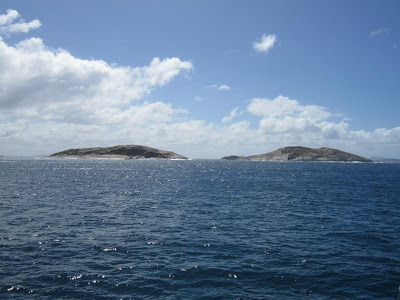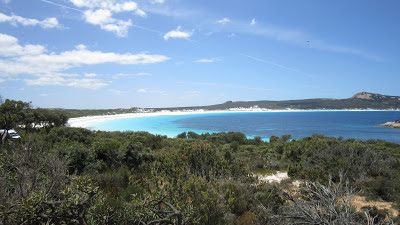The
Super Pit wasn’t the only attraction in Kalgoorlie, though it (and gold in
general) is pretty much the reason all of the other attractions exist. As the major population centre for the
Goldfields region, we thought we’d spend a few extra days here and do some
exploring. We took a tour of the
historic Kalgoorlie Town Hall, which not only served as the seat of government
for the region, but also as an entertainment complex and museum.
After
gold, the survival of Kalgoorlie is attributable to water. There is little water in the area, and
drought is common. Water is instead
pumped 530 kilometers all the way from the Perth Metropolitan Area. The ambitious plan to pump water that far was
thought of in the 1890’s and the pipeline opened in 1903. At the time, it was
the longest water pipeline in the world.
Even more impressive was the fact that the pipe had to raise the water
400 meters due to the rise in elevation between Perth and Kalgoorlie. An engineering feat – especially for that
time.
The
Mount Charlotte Reservoir provided a detailed history of the pipeline as well
as views of Kalgoorlie.
Hammond
Park is Kalgoorlie’s answer to a park and a zoo all wrapped into one. With one emu, a kangaroo or two, and several
cages with birds in them, Hammond Park is a major tourist stop in Kalgoorlie,
mainly because it’s just sort of bizarre.
The
park also has what appears to be a Persian-inspired gazebo and, the big ticket
item, a replica of a Bavarian castle.
Ooooooo.
Under
an old oil rig sits the surprisingly fantastic Western Australian Museum at
Kalgoorlie-Boulder. With exhibits on
gold, the history of the region, and Aboriginal culture, to name a few, the
museum kept us occupied longer than we originally anticipated.
Old
pubs abound, and we dined in one that has been preserved and converted to a
restaurant. The historic Palace Hotel
now features pub grub and decent sandwiches at lunch time.
Other
pubs in town feature skimpies – scantily clad barmaids serving you behind the
counter. The historic bar that had the
mine shaft in it that I mentioned in the previous post had a lady in skimpies
behind the bar. Oscar and I walked in
and it was pretty much a collection of gritty old men at the bar. We were a bit out of place… or a lot out of
place actually… so we had a small beer each, snapped a quick photo, and got the
fuck out of there. If you’re going to
put a lady in a bikini behind the counter, make sure she’s at least prettier
than the collection of nasty, perverted old men watching her…
On
a related note, that brings me to the other big tourist attraction that
Kalgoorlie is famous for: brothels! Being a mining town, there has always been a
pretty skewed male-to-female ratio, so the brothels serve a pretty legitimate
purpose. Back when I lived in Seattle,
tours of the historic district of the city talked about how there used to be a
really disproportionate number of “seamstresses” – code for prostitution. That’s not an issue here as prostitution is
legal in Australia. No code word
required. Kalgoorlie also serves as a destination
for “fly in, fly out” workers – those who work on mines in extremely remote
areas. After a few weeks in the middle
of nowhere surrounded by a bunch of dirty men in a mine, many of the workers
want nothing more than… well, I don’t think I need to continue that sentence. Brothels are big business in Kalgoorie. Australia’s oldest and longest operating
brothel, the Questa Casa, offers tours for tourists (during the day, before it
opens for “business”), but we were unfortunately there in the off season, so we
had to settle for a picture out front instead.
Oh
well. It was sad to miss the tour,
mainly because it would have been nice to tell everyone I went to a
brothel. I just wanted to see the
reaction on their faces…
























































